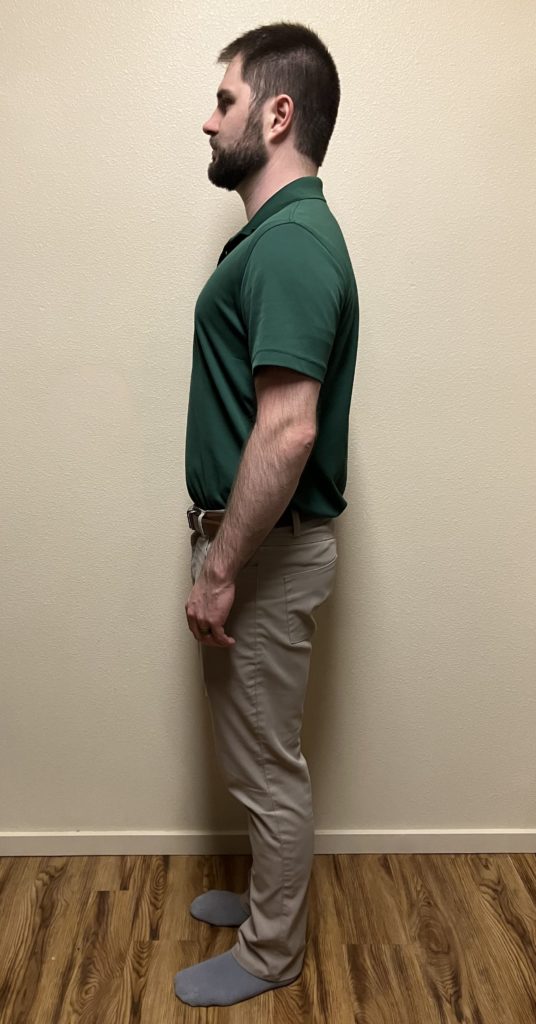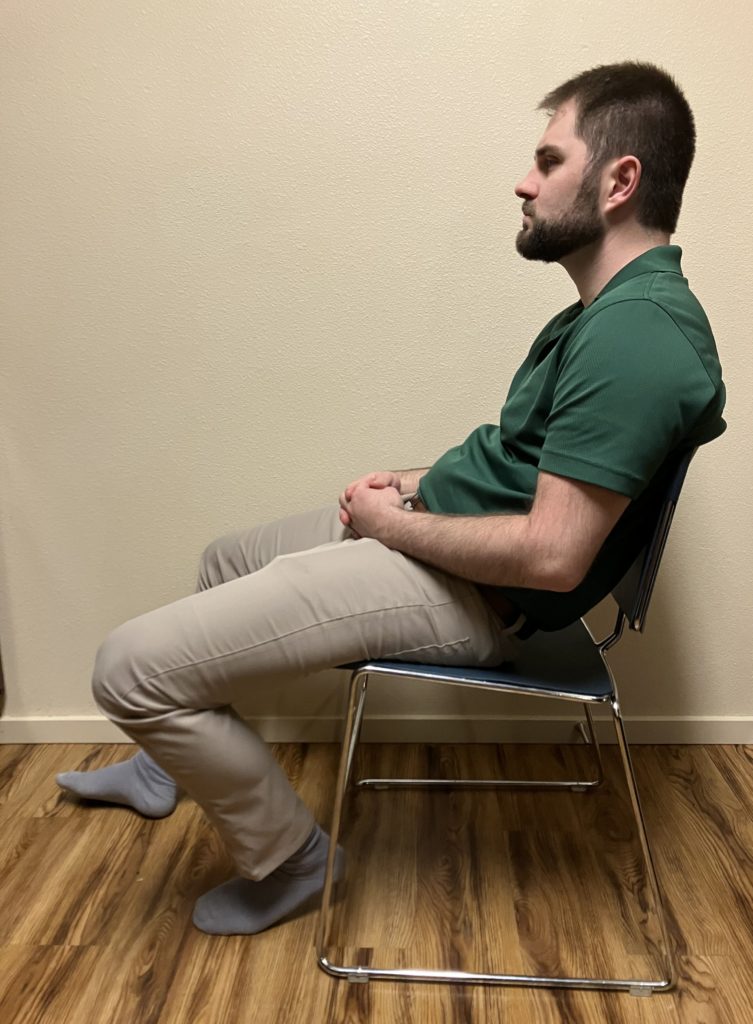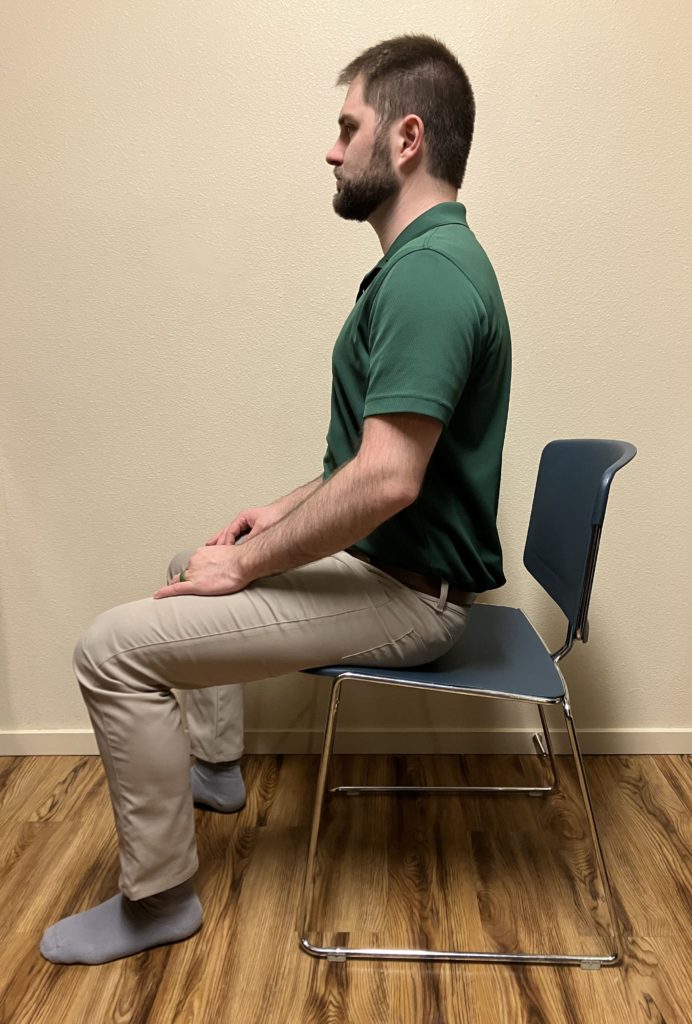Muscle Activation for Posture
Muscle activation is steadily growing in the US, but many people are still unfamiliar with it. In this series we discuss why muscle inhibition can be the reason for many common musculoskeletal ailments, and in turn, how muscle activation could rapidly turn those ailments around.
Maintaining good posture is crucial for overall health and well-being. Unfortunately, due to our sedentary lifestyles, many of us struggle with poor posture. Read on to learn how posture impacts overall health, why inhibited muscles contribute to chronic poor posture, and how muscle activation might be the key to improving even long-standing posture issues.
What does good Posture look and feel like?
Posture refers to the position of your body when standing, sitting, or lying down. Good posture means that your body is properly balanced, and your muscles, joints, and ligaments are working together correctly.
Think of someone who has excellent posture. Stable footing, balanced hips, shoulders back. They don’t have to strain, force, or constantly remember to stand correctly—their muscles default to a balanced, neutral stance.
Now consider the opposite: uneven footing, a shifted hip, shoulders slouched, head leaning forward and tilted up. Moving to better posture requires conscious effort, maybe even needing a mirror to ensure everything is level.
Examples:






If you sit for long periods of time, it can be difficult to maintain good sitting posture. Use a chair or couch with good back support. Sit with your feet flat on the ground, back straight, shoulders relaxed. When working at a desk, raise or lower your computer monitor to eye level.
It can be tough to improve your posture, but the results are worth it. Good posture doesn’t just impact how you look, but can also impact how you feel on a physical and emotional level.
How does Posture impact overall health?
Poor posture can put excess strain on your musculoskeletal system. Common complaints of those with poor posture include:
- Numbness or tingling in the hands while sleeping
- Back pain
- Neck pain
- Headaches or migraines
- Stiff shoulders
- Fatigue
- Breathing difficulties
In addition to physical problems, poor posture may also impact your mental and emotional health. Correct stances or poses may be painful or require too much conscious effort to maintain throughout daily life. Being unable to hold a confident posture can take a toll on how we feel about ourselves, whether we’re aware of it or not.
If posture is this important, why does it take so much effort to maintain good posture throughout our lives? Muscle inhibition may play a large part.
Why would inhibited muscles contribute to poor Posture?
Inhibition occurs when the brain instructs specific muscles to reduce their share of the work (typically due to injury or stress.) The body shifts the workload to your fully functioning muscles to compensate, which over time may lead to specific patterns of rapid fatigue, overexertion, pain, or even increased risk of injury. It can also accelerate uneven wear and tear on ligaments and joints, leading to degenerative conditions such as arthritis.
Many factors encourage poor posture—a non-ergonomic office chair at work, moving with chronic pain or injury, or even peer pressure or lack of confidence. The human frame is exceptional at working through adversity, and our bodies constantly try to adapt to the least painful position. In time, unbalanced posture becomes the most natural and comfortable stance, which can lead to increased strain on our musculoskeletal system. Then, excess strain fosters muscle inhibition.
As mentioned before, good posture should require minimal to no conscious effort. Your baseline pose should feel natural and comfortable. Inhibited muscles, however, take more effort to use and give out much more quickly. During the initial muscle exam, most patients are surprised to discover that their body’s compensation patterns are so deeply ingrained that they subconsciously avoid using inhibited muscles whenever possible.
Example: An individual with slumped shoulders may have weak, inhibited pectoral muscles, pulling the shoulders forward and down. Since the pecs aren’t pulling their weight, the rhomboid muscles (large, diamond-shaped muscles covering the shoulder blades) may also become inhibited from overuse, making it difficult to keep the shoulders back without conscious effort.
Is it possible to help our inhibited muscles and improve years of poor posture?
How can muscle activation with New Leaf House Call Chiropractic improve Posture?
During the first muscle activation exam, Dr. Stewart reviews your intake paperwork and health history with you. He then tests more than 300 of your muscles to determine which are firing at less than full strength.
Looking at the overall picture of “off” and “on” muscles, Dr. Stewart assesses your motor pattern and symptoms as a whole. This helps determine which inhibited muscles should be activated first and which joints may need adjustments to provide you with the best results.
In the case of poor posture, muscles in the neck, chest, upper back, and core often play major roles.
Once your muscles are activated and ready to work together again, Dr. Stewart teaches you specific rehab exercises per muscle area. This is crucial in retraining your body for effortless good posture! These targeted exercises strengthen the neural pathways of your new and improved motor pattern.
For most patients, once your muscles are activated, they do not need to be reactivated again unless they experience overtraining or another trauma. Our goal is not to just spot treat symptoms to help you limp along, but to actually help you feel better long-term!
Summary (TL;DR)
Good posture doesn’t just help you look confident—it can improve your health and help you feel confident too. Inhibited muscles can make it difficult to maintain good posture without conscious, continuous effort. Our muscle exam provides a snapshot of how inhibited muscles contribute to your unique motor pattern and posture. Muscle activation coupled with targeted rehab exercises may be just the boost you need to effortlessly stand tall and strong again.
Comments or questions about posture or muscle activation? Message us or comment below!